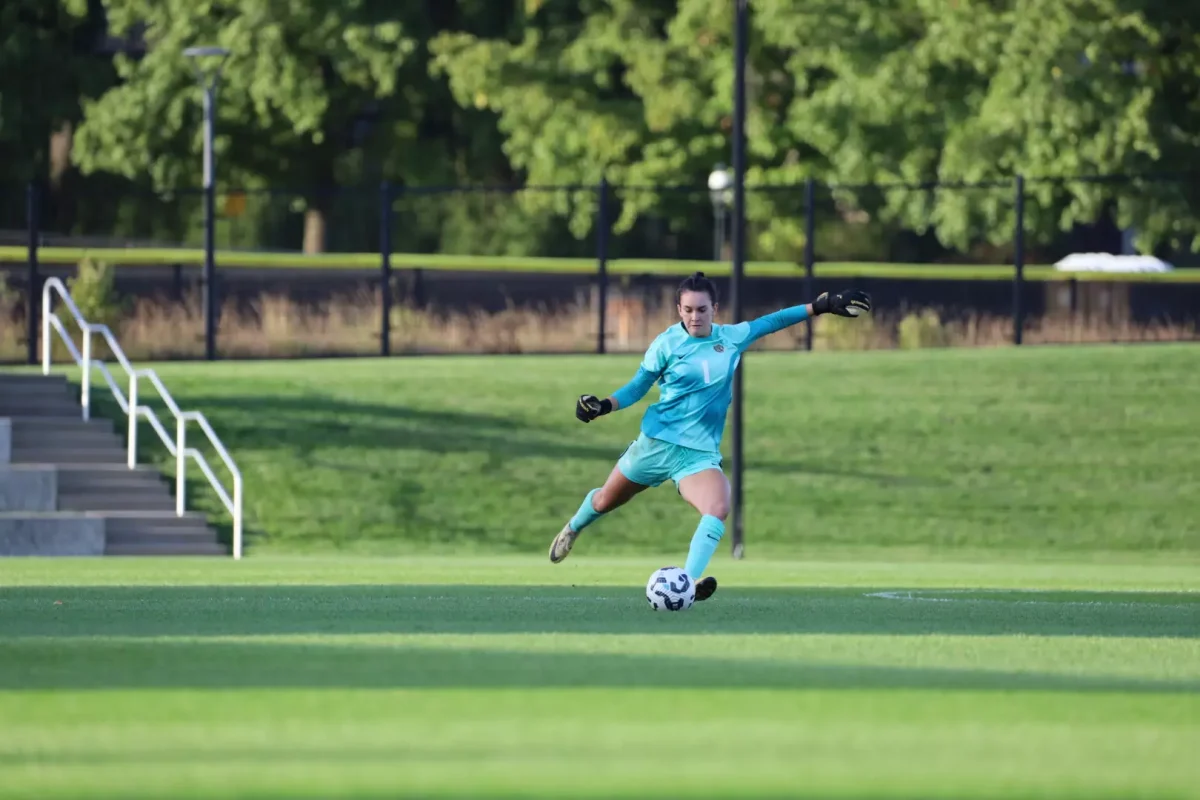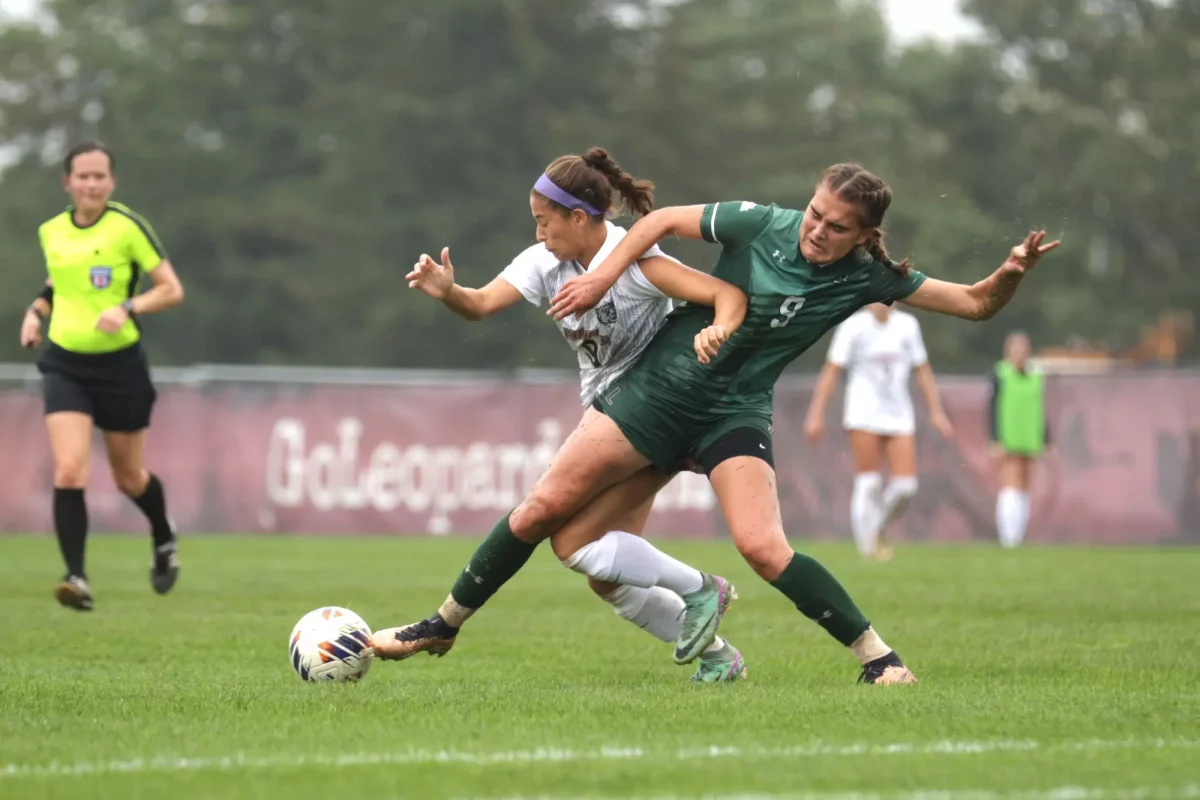160 years of Lafayette-Lehigh football means 160 years of rivalry traditions. Unlike the game itself, these customs have changed over the decades. Students-turned-faculty and staff provided insight into how Rivalry Week events have evolved.
“As with anything else, something that occurred 50 years ago was very different than it is now,” said Peter Newman ‘73, who has been working at Lafayette College since 2008 and has attended the past 55 rivalry games. “It was a different world. Student interests were different.”
While the rivalry game has always generated social events and school spirit on campus before, during and after the game, campus-wide traditions have significantly transformed from one generation to the next.
According to Cathy Novello ’83, who is now a part-time education instructor, many of the traditions surrounding Rivalry Week, and social life in general, were driven by the fraternities on campus.
“I started here in 1979 when women had only been attending Lafayette at that point for seven years, so there were more men than women,” Novello said. “Fraternities were really the focal point of social life.”
Along with breakfasts held before the football game, after the game, students got dressed up for cocktail parties held by fraternities and other living groups on campus. Following the cocktail parties, fraternities would begin to play more lively music and students would travel from fraternity house to fraternity house to dance the night away.
Newman recalled that during his time at Lafayette, each fraternity had a live band play after 8 p.m.
Mary Roth ‘83, who has been teaching at Lafayette since 1991, said that the cocktail parties in particular were “fun and different from other types of parties that were on campus.”
However, not all of the traditions surrounding Rivalry Week had such decorum.
Until 1991, students from both Lafayette and Lehigh would storm the field after the game and try to tear down the goalposts. Each fraternity would try to get a piece of the goalpost to keep as a “badge of honor” Newman said.
However, Newman continued, the fight for the goalpost quickly became ugly.
“There were a lot of kids who got into fights, and the police got involved, and they had police dogs there, and it got a little nasty at times,” Newman said.
Today, while the Lafayette-Lehigh rivalry remains as alive and fierce as it’s ever been, students have traded brawls and vandalism for lighthearted barbs painted on bed sheets and taking their aggression out on a beaten-up, spray-painted car to raise money for cancer research.
Novello said that she was glad that today’s traditions and activities reflect a more healthy sense of rivalry and a “positive, productive culture.”
“I think it’s been an evolution, and it has to do with what’s important to people,” Newman said. “I think that the focus on the college, rather than just the rivalry, is part of that change.”
Roth said that Rivalry Week has transformed into a “campus celebration” rather than being solely focused on the game itself.
“I think the activities have become more inclusive, which I think is a good thing,” Roth said. “Just having it focused on the day and on the sport was less interesting to a large number of people.”
Novello agrees with Roth that the current Rivalry Week activities try to include everyone on campus.
“I think the events of today focus more on bringing lots of people together from a central point, as opposed to fraternity having a gathering,” Novello said.
Newman, Novello and Roth all agreed that despite the changes Rivalry Week has undergone over the past several decades, the Lafayette-Lehigh game still can bring everyone together.
“I think the game is still the most important thing,” Roth said. “That’s why we even define the week.”
























































































































Jeff R • Nov 23, 2024 at 9:42 pm
The rivalry game between two all-male schools back then became a serious threat to the safety of spectators and students sitting in the stands. One early 1960s rivalry game at Lehigh turned into a full-fledged riot after the game with students from both schools fighting each other on the field. The Lehigh students had attacked the Lafayette stands during the game and hurled apples, bottles and other hard objects. Students were injured. Back then, uncontrolled alcohol brought into stadiums in flasks contributed significantly to the drunken brawl and mayhem that followed. Presidents of both schools got concerned and finally decided to crackdown on the unfettered use of alcohol and the ensuing violence that took place each year. Large police presence helped a great deal. Game time was moved up.
Sneaking onto the opposing stadium and knocking down the old wooden goalposts a few days before the Big game was a big deal. Fields were patrolled at night by student volunteers and if one was caught, a giant L would-be shaved in his hair. A group of us did it successfully in 1959 at the old Lehigh stadium and the Lehigh wooden goalpost beam we brought back to Easton, lashed to the side of our car, became the base of the fraternity’s new bar in the basement.
The after game cocktail club or AGCC as it was dubbed at some Lafayette fraternities after the big games often had local live jazz bands performing, plus live rock ‘n roll bands for the night party at most if not each of the 19 fraternities. No, the AGCC in the 1960s was not a “dressy” occasion as the article suggests except that we generally wore what we wore to the games…itself a lot dressier than what students wear now.
Jeff R • Dec 3, 2024 at 6:32 am
Correction…..year of goalpost takedown incident at Lehigh was 1958.